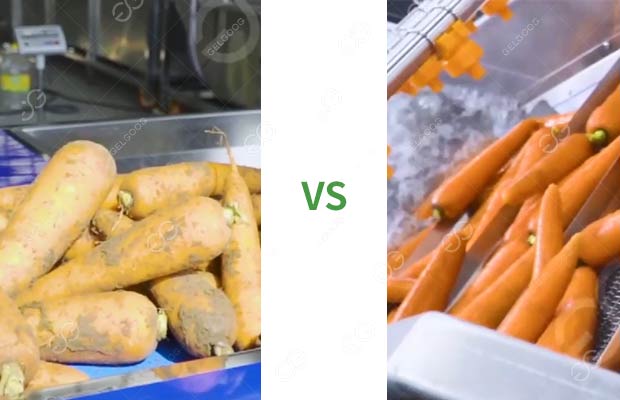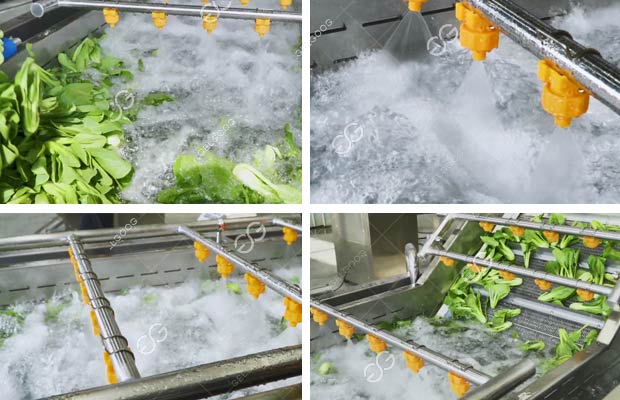How Does the Factory Wash Vegetables in Large Quantities?
- 2024-05-20 /
- Lutie
Do you know how does the factory wash vegetables in large quantities? Factories generally need to clean vegetables on a large scale. Traditional manual cleaning is time-consuming and labor-intensive and difficult to ensure the consistency of hygienic standards.
Food safety is receiving more and more attention, especially with people's demand for fresh, clean agricultural products and higher pursuit of health. Since several tons or even dozens of tons of vegetables need to be cleaned every day in the factory, requires the use of automated vegetable washing production line equipment.

Advantages of vegetable washing processing line:
1. With its high efficiency, high-standard cleaning effect, and significantly reduced manual dependence, this processing line can improve production capacity and ensure food safety.
2. Significantly improves the cleaning speed, while reducing water and energy consumption through precise design.
3. The automated vegetable washing production line can quickly complete the cleaning, cutting, peeling, grading, and other steps of vegetables, shortening the production cycle and improving overall production efficiency.
4. Although the initial investment is high, in the long run, automated production lines can significantly reduce labor costs, reduce losses, save water and electricity, and improve economic benefits.
5. Extend the shelf life: Some processing lines include fresh-keeping processing and packaging links. For example, the use of special plastic wraps and trays can effectively extend the freshness and shelf life of vegetables and reduce losses during transportation and sales.

How Does the Factory Wash Vegetables in Large Quantities?
Step 1: Raw material reception and pre-processing:
Manually or mechanically select rotten vegetables, and trim off the roots, dead leaves, and inedible parts of the vegetables.
Step 2: Initial cleaning:
Use high-pressure spray or bubble cleaning machines to preliminarily clean vegetables with large amounts of flowing water to remove dust and impurities on the surface. If it is root vegetables, you can use a brush cleaning machine to remove dust from the root vegetables more effectively.
Step 3: Cutting and grading (as needed):
Cutting: Vegetables can be sliced, shredded, or diced as needed, and the vegetables can be divided. Grading: Sorting vegetables by size, shape, or weight.
Step 4: Secondary cleaning:
Secondary cleaning the cut vegetables again to ensure there are no residues, and use disinfectant for disinfection.
Step 5. Dehydrate:
Use a centrifuge or vibrating screen to remove excess moisture from the surface of vegetables for easier packaging and storage.
Step 6. Packaging and Refrigeration:
Depending on demand, vegetables are weighed, packaged, and quickly stored in refrigerated or frozen storage to maintain freshness.
The above introduces how the factory wash vegetables in large quantities, the vegetable washing drying production line can solve the problem of large-scale cleaning of vegetables. If you are interested in this type of equipment or need to start a vegetable processing business, please feel free to contact us, we are vegetable processing equipment manufacturers who can customize a complete solution according to your needs.
Email: serena@machinehall.com
WhatsApp/Mobile: +8615515597212







